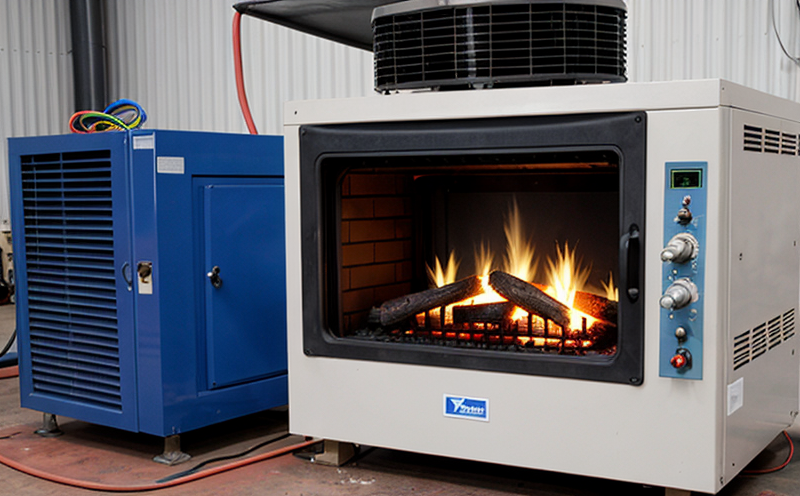ISO 4589 Thermal Oxygen Index Testing for Lighting Plastics
The ISO 4589 standard is designed to measure the thermal stability of materials, specifically plastics used in lighting applications. This testing ensures that these materials do not ignite or continue burning when exposed to a specific range of oxygen and nitrogen levels. The primary purpose is to determine the lowest oxygen concentration at which a material will continue to burn (Oxygen Index) under controlled conditions.
Lighting fixtures, especially those used in public spaces like airports, auditoriums, and stadiums, are subject to rigorous safety regulations. Testing materials according to ISO 4589 ensures compliance with international standards and helps prevent potential hazards associated with poor thermal stability of plastics. This test is critical for product longevity and safety.
Materials tested typically include polycarbonate (PC), acrylonitrile butadiene styrene (ABS), polyethylene terephthalate glycol modified (PETG), and other thermoplastics commonly used in LED lighting, recessed ceiling fixtures, and downlights. The test is particularly important for plastics that will be exposed to high heat or have long-term use environments.
The testing process involves placing a small specimen between two flat plates within an oxygen/nitrogen mixture chamber. The temperature of the specimen is gradually increased until it starts to burn continuously under defined conditions. Once ignition occurs, the test measures how much additional oxygen is needed to maintain combustion. This value represents the Oxygen Index.
Understanding this parameter helps manufacturers design safer and more durable products. For instance, higher values indicate better thermal stability, which translates into longer product life and reduced risk of fire hazards. Proper testing ensures that materials meet stringent international standards such as IEC 60598 for lighting fixtures.
Scope and Methodology
| Test Parameters | Methodology Details |
|---|---|
| Temperature Range | The test is conducted within a temperature range of 10°C to 50°C, with increments of 5°C. |
| Oxygen Concentration | The oxygen concentration in the chamber is adjusted from 21% down to 16%, with steps of -1%. The nitrogen concentration adjusts accordingly to maintain a constant total gas mixture volume. |
| Specimen Size | A standardized specimen size of 50 mm x 38 mm x 5 mm is used for testing, ensuring consistent results across different manufacturers and labs. |
| Ignition Time | The test measures the time from when the flame is applied until the sample ignites continuously. This duration helps determine the ignition sensitivity of the material. |
In this controlled environment, the specimen is exposed to a steady flow of oxygen and nitrogen gases. The gas mixture ratio can be adjusted by changing the volume of pure oxygen or nitrogen introduced into the chamber. Once ignited, the sample is observed for continuous burning until it extinguishes.
The test procedure involves several steps including pre-treatment of the specimen, setting up the apparatus with the correct gas flow rates, and starting the ignition process. After each trial, data points such as the ignition temperature, the time to reach steady combustion, and the final oxygen concentration are recorded. These parameters help in calculating the Oxygen Index for the tested material.
Repeatability of results is ensured by using standardized methods and calibrated equipment, ensuring that tests conducted at different times or locations yield consistent outcomes. This repeatability is crucial for quality assurance and regulatory compliance purposes.
Benefits
- Ensures compliance with international standards like ISO 4589 and IEC 60598.
- Promotes product safety by identifying materials that are prone to ignition under specific conditions.
- Aids in material selection for high-performance applications requiring thermal stability.
- Supports R&D efforts to develop safer, more durable plastics used in lighting fixtures and other consumer products.
- Reduces the risk of fire hazards associated with poor thermal stability of plastic materials.
- Facilitates regulatory compliance by providing accurate data for certification purposes.
- Enhances brand reputation through consistent quality assurance practices.
The results from this testing can significantly impact product design and manufacturing processes. By identifying the optimal oxygen index, manufacturers can choose more suitable materials that meet both performance requirements and safety standards.
Eurolab Advantages
At Eurolab, we offer comprehensive ISO 4589 thermal oxygen index testing services tailored to the needs of lighting fixture manufacturers. Our expertise lies in providing accurate, repeatable, and reliable test results using state-of-the-art equipment.
- Comprehensive Testing Capabilities: We have the latest apparatus for conducting rigorous ISO 4589 tests under controlled conditions.
- Experienced Technicians: Our team of certified professionals ensures that each test is conducted meticulously and accurately.
- Accurate Reporting: All results are presented in a clear, concise manner along with detailed analysis to aid decision-making processes.
- Regulatory Compliance: We ensure that all tests meet the stringent requirements set by international standards bodies like ISO and IEC.
- Custom Solutions: Our services cater not only to standard testing but also offer customized solutions for specific product requirements.
- Quick Turnaround Time: We strive to provide results in a timely manner without compromising on the quality of our tests.
By partnering with Eurolab, you can gain confidence that your products will meet all necessary safety and performance criteria. Our commitment to excellence ensures that every test conducted contributes towards creating safer, more reliable lighting solutions.





